Saker Falcon Profile
Hungarian legend speaks of an enormous bird of prey, called the Turul, who acted like a protector spirit, perched on the tree of life. It’s said that the original Hungarians, the Magyars, were led by this bird out of Central Asia to Budapest, where they were to settle.
It’s thought that these myths are a representation of an ancient relationship between humans and birds that dates back to the dawn of civilisation.
The relationship between the Saker falcon and their handlers.
The Saker falcon is large species of falcon that can be found across North Africa, Asia, Southern and Eastern Europe. They are the national bird of Hungary, the United Arab Emirates, and Mongolia.
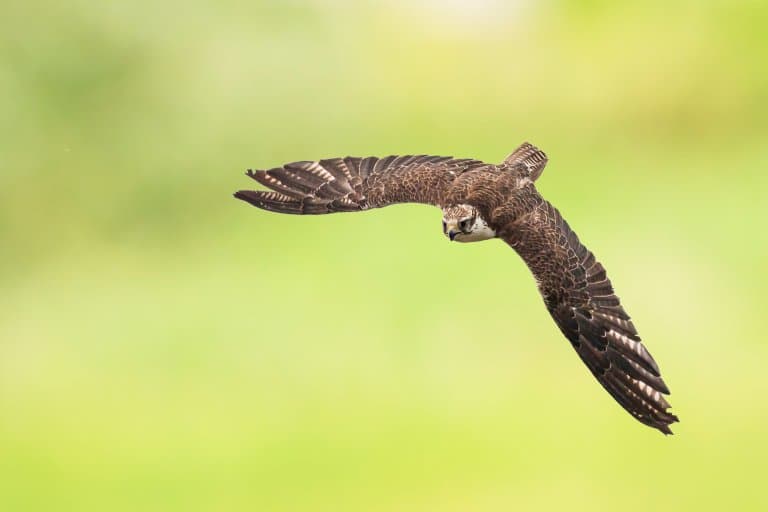
Saker Falcon Facts Overview
| Habitat: | Forest, shrubland, grassland, desert |
| Location: | North Africa, Asia, Southern/Eastern Europe |
| Lifespan: | At least 16 years |
| Size: | 57cm (22 inches) tall, 126cm (50 inch) wingspan |
| Weight: | Up to 1.3kg (46oz) |
| Color: | Brown |
| Diet: | Rodents, birds |
| Predators: | Foxes, wolves |
| Top Speed: | 150 kph (93 mph) in horizontal flight |
| No. of Species: |
1 |
| Conservation Status: |
Endangered |
Sakers are large, fast predators, with the resilience of a wasteland specialist. They have a preference for open grasslands with trees and cliffs to perch upon and aid their hunting.
They mainly hunt prey by horizontal flight, before swooping low over the ground to feed on rodents such as squirrels, and other birds, such as feral pigeons.
They’re historically popular among hunters for their talents, though this popularity has led to their decline all over the world. Other threats include destruction of habitat due to a shift towards industrial agriculture and electrocution on power poles, which it attempts to use for nesting.
Their total population size is estimated to be between 8,000 and 17,000 pairs, making it one of the rarest raptor species.
A lot of politics has gone into their protection, and there are some elegant solutions in play that aim to keep everyone happy. However, they’re still classified as endangered, and much has to be done to prevent these tough and adaptable birds from disappearing forever.
Interesting Saker Falcon Facts
1. They are one of the fastest birds
Like many falcon species, the Saker is really, really fast and one of the fastest birds in the world.
The peregrine falcon is often lauded as the fastest animal on earth, capable of incredible diving speeds, but it’s thought that the Saker is faster in powered flight, under its own force.
Quite how fast this is, remains a bit of a mystery, though based upon theorised speed from extrapolating recorded data they are thought to each speeds of 150 kph (93 mph) in level flight.
This would make the Saker falcon the third fastest bird in horizontal flight.
Researchers are performing wind-tunnel tests to identify what makes them so aerodynamic. Unlike the peregrine, Sakers typically hunt on more of a horizontal plane, meaning they’re more adapted to fly fast than to dive or stoop. 1
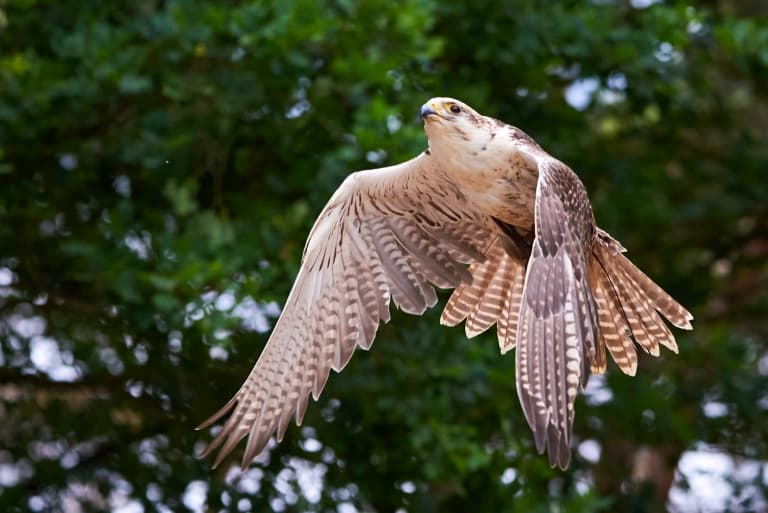
2. Saker falcons are the second largest falcon species in the world
Smaller only than their very close relative, the Gyrfalcon.
They can measure between 45–57 cm (18 – 22″) length with a wingspan similar to a common Buzzard, between 97 – 126 cm (38 – 50″).
Males weigh up to 990g and like most bird species, females are larger and weigh as much as 1,300g.
3. Saker are polymorphic
This means that individuals can vary greatly in size, shape, and plumage colour.
While they are predominantly dark brown with a white underbelly and dark brown spots, this can and often does vary across their breeding range.
Saker are typically smaller and daker in the west and larger and lighter in the east.
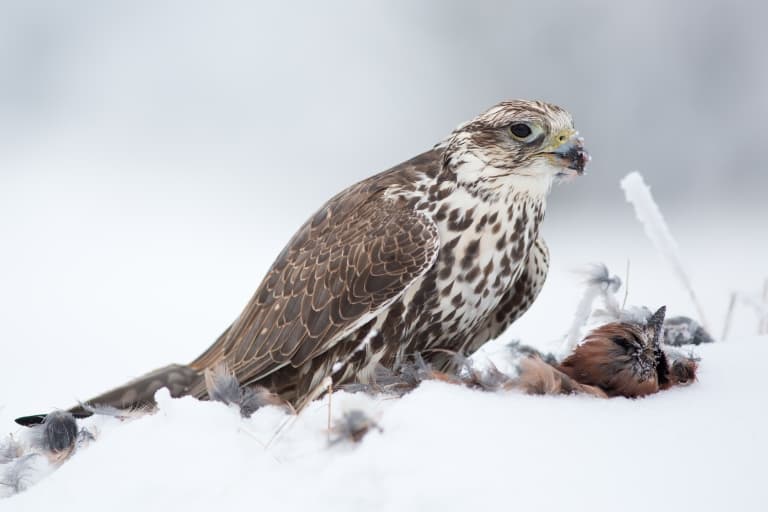
4. They’ve been used as hunters for thousands of years
One of civilisation’s earliest forms of hunting involves training falcons to catch prey.
Hares, gazelles, and running birds are too fast and have too high stamina for catching with dogs, so in many desert areas, falcons are used.
The Saker is one of the most popular birds for this. It’s large, strong, and has long legs. It’s also said to be more intelligent than the more expensive peregrine. 2
5. They are bred with the Peregrine Falcon
In recent years, the saker falcon has also been bred with the peregrine falcon to create hybrids that provide falconers with a greater size and horiztonal speed than the peregrine, that also dives to catch game like a peregrine.
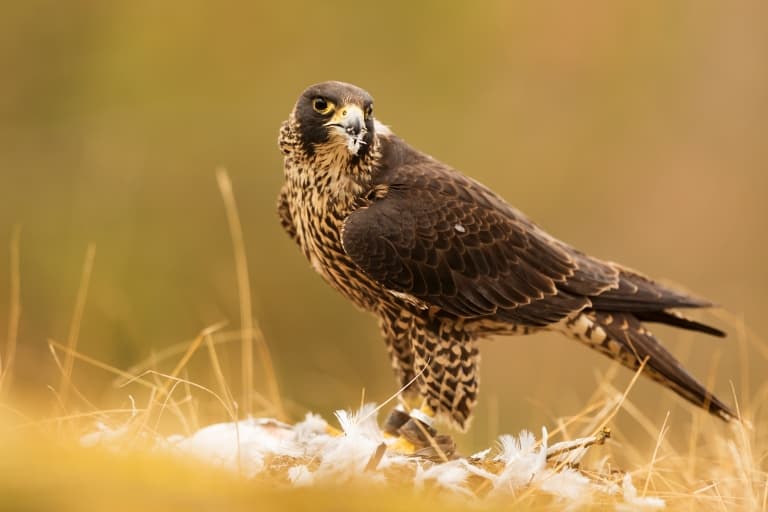
6. They have remarkable breeding habits
While they mostly nest in cliffs, in Mongolia, the Saker falcon nests in man-made structures. One study found them nesting on powerlines and in abandoned bridges, and one pair made their nesting site inside a truck tyre on a metal pole.
The location is often interesting, too. These birds have been seen nesting very close to buzzard nests, and even in one case, inside a recently-abandoned one. Like the Peregrine, the Saker seems to be well adapted to using a wide range of breeding habitats, including man-made structures and other opportunistic locations with abundant prey.
This bodes well for their conservation, as they are less prone to the deleterious effects of habitat destruction as long as their food sources remain present, but the major source of their decline comes from other human behaviours. 3
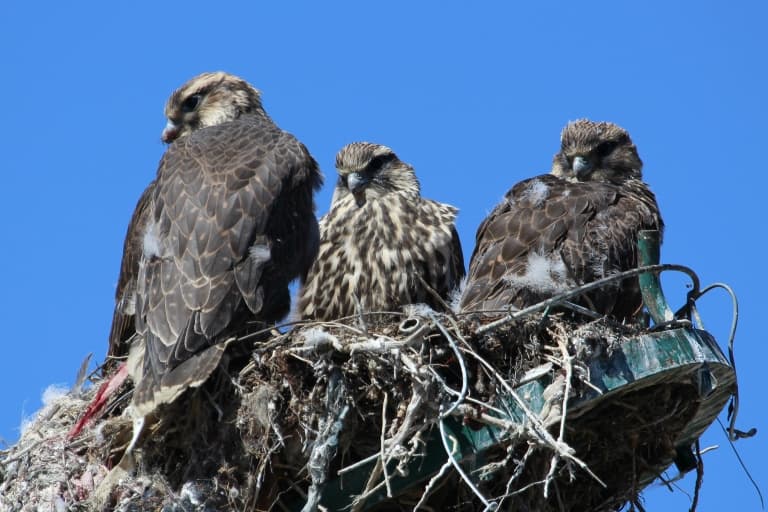
7. They’re still in trouble
While a third of the global population is thought to be found in Mongolia, their numbers are declining even there. Mongolia issues permits for the harvest and trade of Saker falcons, for their own falconry market, and for that of other nations, such as Saudi Arabia.
While this trade was supposed to be well-regulated, it became obvious that it involved a lot of corruption and shady practices, and the international the Convention of International Trade in Endangered Species (CITES) stepped in to recommend a ban on their issuing of export permits for Saker falcons until research had been conducted and the problem of rapidly-declining populations had been addressed.
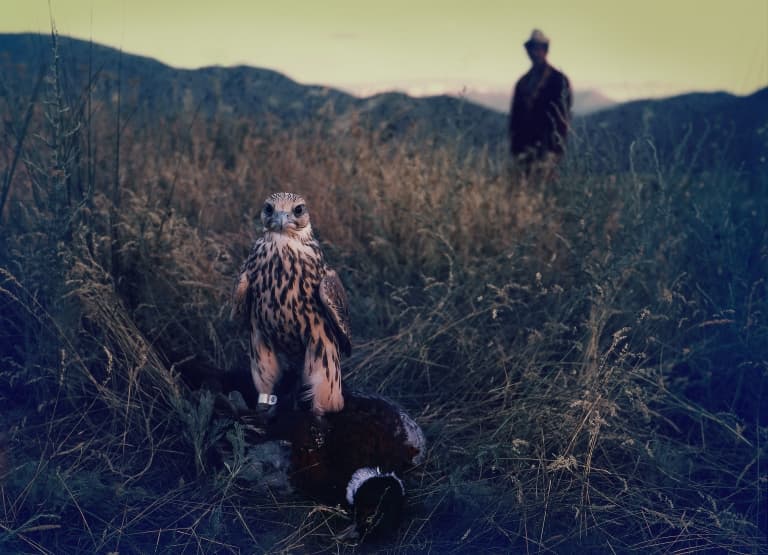
8. Bird politics is strong and complicated
The Mongolian government agreed to the recommendation and pledged to do something about the issue. Immediately following the meeting, they were found to carry on as normal, seemingly forgetting the promises they made to CITES and the global community.
This went back and forth for a while, with CITES setting a quota of 300 Saker falcons for international trade, Mongolia ignoring it, CITES recommending a ban on the trade of the Saker, UAE getting involved, and the IUCN making a tremendous leap in their ranking of the falcon from Least Concern to Endangered. 4
9. There are solutions
Nobody’s going to get rid of the culture of falconry in the Arab nations, at least in the short term. The demand for Sakers will remain supplied either legally and sustainably, or illegally until the birds become extinct.
As is the frustrating case with conservation everywhere, solving this problem is a matter of adjusting to the inflexibility of human behaviour, rather than changing it. In 2010, 5,000 artificial breeding nests went up for the bird, and by 2014 there were 2,500 fledglings produced out of them.
These breeding populations were set up to meet the demand for new falcons in areas in which they’re used for hunting. While it seems to be working to some extent, numbers in most populations are in decline, and continued pressure needs to be applied to their protection. 5
10. The Saker Falcon Task Force
This conjures up images of armoured bird divisions deploying from helicopters and rescuing trafficked chicks from the back of shipping containers. In reality, it’s a lot more sensible, but does aim to do something similar.
The STF is made up of 40 specialists from 20 countries, with the aim of bringing together all stakeholders and finding common ground. The task is to develop a Global Action Plan of management and monitoring, and ensure the long-term conservation of the species’ wild populations, whilst at the same time developing ways to enable sustainable use of Sakers for traditional falconry purposes. 6
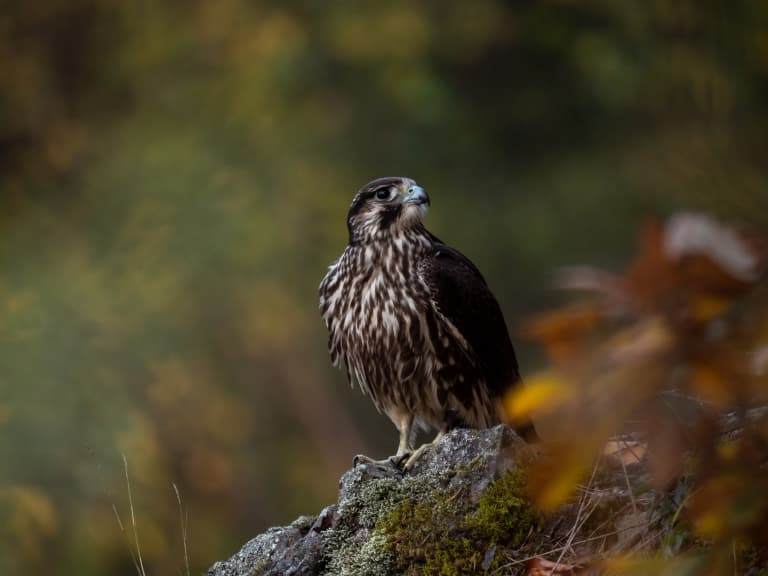
11. The Saker falcon is in Disney’s Mulan
In Disney’s “Mulan,” the Hun leader Shan Yu owns a Saker falcon called Hayabusa.
Saker Falcon Fact-File Summary
Scientific Classification
| Kingdom: | Animalia |
| Phylum: | Chordata |
| Class: | Aves |
| Order: | Falconiformes |
| Family: | Falconidae |
| Genus: | Falco |
| Species Name: |
Falco Cherrug |
Fact Sources & References
- Martin Heinold & Christian J. Kähler (2019), “Aerodynamic Investigation of the Free Flapping Flight of a Saker Falcon“, SpringerLink.
- G. Rex Smith (2007), “Observations on hunting in the Arabian Peninsula“, Taylor & Francis Online.
- DAVID H. ELLIS et al. (1997), “REMARKABLE SAKER FALCON (FALCO CHERRUG) BREEDING RECORDS FOR MONGOLIA“, The Raptor Research Foundation Inc.
- Andrew Dixon (2015), “Commodification of the Saker Falcon Falco cherrug: Conservation Problem or Opportunity?“, SpringerLink.
- Dixon, A. (2015), “Commodification of the Saker Falcon Falco cherrug: Conservation Problem or Opportunity?“, Problematic Wildlife.
- CMS (2022), “Saker Falcon Task Force?“, The CMS Memorandum of Understanding on the Conservation of Migratory Birds of Prey in Africa and Eurasia.
